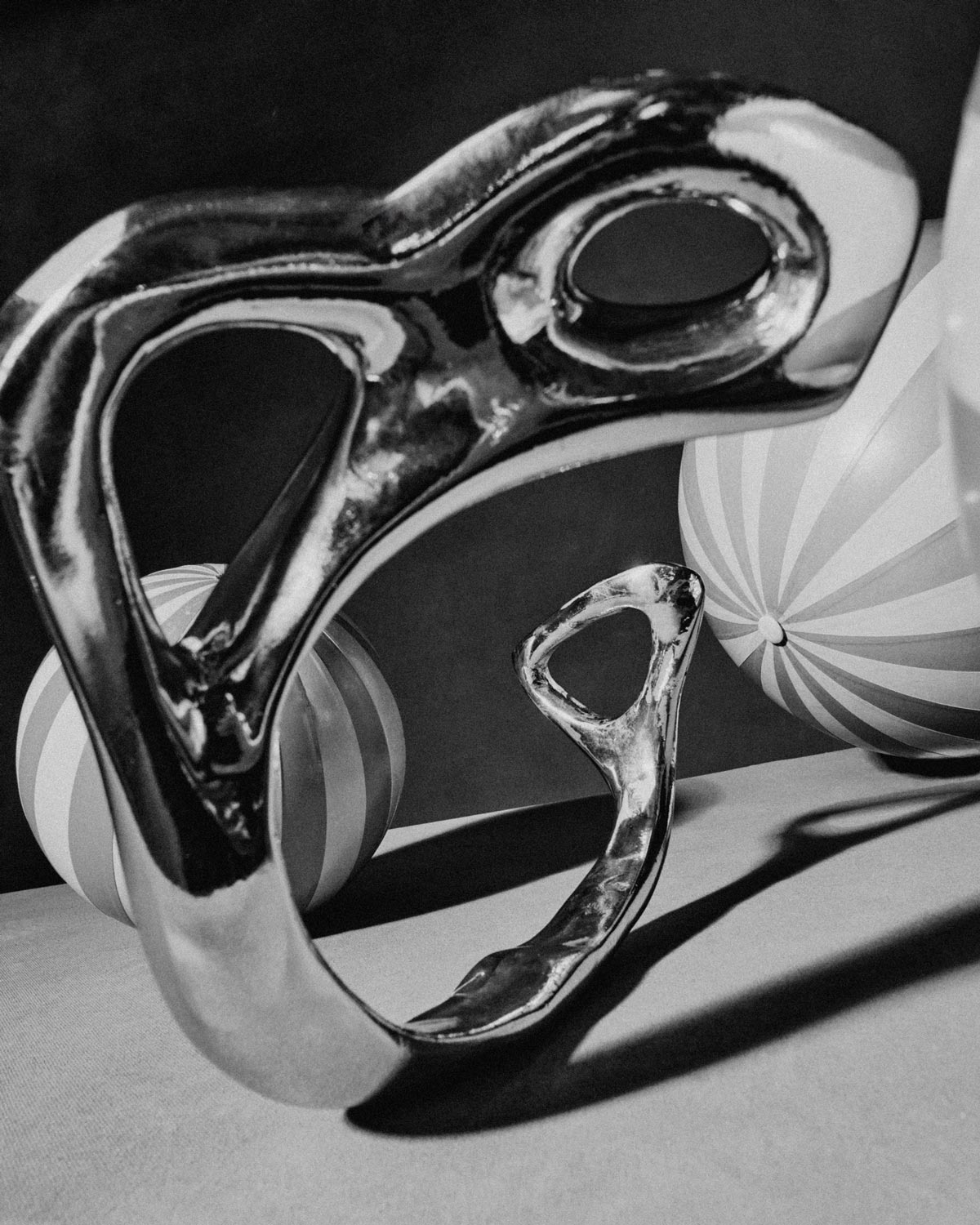Michael Stewart Dunne, the designer behind the burgeoning label, speaks to the Irish relics that inspire him, and the traditions of craftsmanship he lives by
Standing Ground’s designs take the archaic and merge it with a sort of science-fiction futurism. In that sense, they’re timeless—or, more accurately, transcendent of time, making up a visual language of their very own. “It’s like a reset on aesthetics,” says Michael Stewart Dunne, the designer behind the burgeoning, East London-based label. “I like how, in their elemental form, [ancient objects] have ambiguity. They’re sort of like connection points between different times.”
Dunne’s long-standing wellspring—and his brand’s namesake—are the standing stones of Ireland. Raised in the nation’s West, the designer’s connection to the past was fostered by these relics. They piqued an interest in early cultures and in nature, developing his sense of the mundane, of the special, and where the two overlap.
Dunne’s signature jersey gowns are statuesque, and instinctually constructed; flawlessly draped, with tendrils following the contours of the wearer’s body; the palette alternates between the earthen and the cosmic, seeking balance in the in-between. Here, the designer speaks on analog production, “sensitivity of hand,” and his mission of filling in the gaps of the past, to create what lies ahead.
Morgan Becker: Where does the name Standing Ground come from?
Michael Stewart Dunne: The standing stones that populate Ireland—ancient relics that have [remained] upright for thousands of years, and, for me, represent some of the earliest [landscape] design. They’re like figures that cross over from different times. Standing Ground also plays on the phrase to stand your ground, holding your position on a belief.
Morgan: How have your youth and upbringing influenced your current design practice?
Michael: I was raised in the West of Ireland, an area rich in ancient settlements and sites. This ignited my interest in cultures of the past. From a design point of view, growing up in an area relatively uninfluenced by the wider world allowed me to develop my own distinct set of ideals and aesthetics. Normality and conformity sometimes allow you to value what is special.
Morgan: Can you isolate the elements that draw you to objects of the past, and where they tangibly appear in your work?
Michael: It’s like a reset on aesthetics. Often, you’re only looking at fragments of objects. I like that I can fill in missing visual information with my mind; you can imagine—if an ancient culture had not been influenced or interrupted—how it could have developed. This is where the sci-fi element of my work appears; some very ancient objects [seem] almost futuristic. I like how, in their elemental form, they have ambiguity. They’re sort of like connection points between different times.
Morgan: Where was the color scheme derived from? What about the materials?
Michael: The color scheme was developed instinctually. I chose colors that I was attracted to, and that worked well together. Two distinct palettes emerged in this process: one of the earth, and [the other] more futuristic and cosmic. And the collection was a study in jersey. I wanted to use one fabric and treat it in different ways, and show a modern way of cutting.
Morgan: What’s behind the decision to focus on gowns?
“Good craftsmanship has resonance. It has energy and presence.”
Michael: Eveningwear is my speciality, and I’m focusing on creating made-to-measure pieces for clients. Gowns are special, and not for every day—I love that they can be so transformational.
Morgan: What denotes good craftsmanship?
Michael: Good craftsmanship has resonance. It has energy and presence. I think that design must be supported by craft. Analog techniques are dying; fewer and fewer people can work with their hands. It takes years to develop sensitivity of hand. You know good craftsmanship when you see it—it looks and feels special, but it’s rare.
Morgan: You’ve said that you don’t really work with references to contemporary fashion. Still, are there designers in the industry today who have made an impact on your work?
Michael: By that, I mean I don’t [design from] existing garments. I just drape cloth onto the mannequin, and develop my own lines and patterns from there. Designers who work that way have had an impact on me. It’s a less common way of working, compared to designers who sketch or [use] image references. Most notably, in the industry today, I adore Rick Owens’s work—there is a distinct handwriting there, and a real distinguished line. It’s essentially his hand in every garment. Others from the past: Madame Grès, Charles James, Azeddine Alaïa, Geoffrey Beene, and Thierry Mugler.
Morgan: Who do you design for?
Michael: I design what pleases me and what feels right; I’m letting my customer come to me. I think that if you create what you love, it resonates with others much more naturally.
Model Elvina Patrick at Wilhelmina. Set Design Tors Beedles. Casting Abi Corbett.















